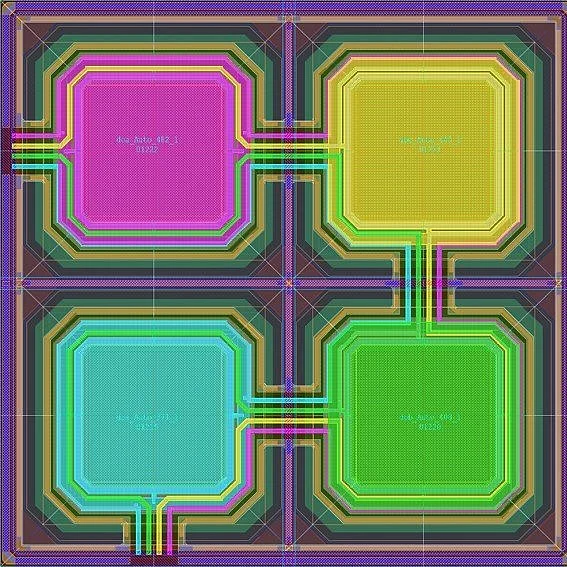Leveraging the company’s 180nm XS018 CMOS semiconductor process, which is specifically optimised for the fabrication of sensors, four new high-performance photodiodes have now been made available.
This new product offering consists of two enhanced-response photodiodes with increased sensitivity across UV, visible, and IR wavelengths (full-spectrum), along with two advanced UV dedicated photodiodes referred to as the doafe, dobfpe, dosuv, and dosuvr.

The doafe is a full spectrum device featuring a ~730nm peak sensitivity. At 730nm, the spectral responsiveness of this device is 0.48A/W. A wide range of applications rely on such photodiode performance, including smoke detection, position sensing, or spectrometry. They benefit from a ~15% better sensitivity and over 50% smoother responsiveness than the previous generation.
The dobfpe is particularly effective in the red and NIR parts of the spectrum (with a peak sensitivity around 770nm).
The dobfpehas improved sensitivity in the IR range, with about 25% improvement compared to the company’s prior dob device. This improved diode is insensitive to UV and blue light and has a distinct spectral response function with a clear peak in the IR, making it the ideal choice for proximity sensing applications.
These new devices provide enhanced performance with increased sensitivity for proximity sensing, particularly when the ambient light and proximity sensors are placed under the screen panel.
Complementing those options, X-FAB has announced a new advanced UV photodiode- dosuv – which exhibits heightened sensitivity in the UVC band (200nm to 280nm).
The company’s engineering team reports that at 260nm, this best-in-class product delivers nearly double the performance of anything previously available.
At 235nm, it has a 0.16A/W spectral responsivity. There is also the dosuvr, which is a reference device for use in dosuv-based development work.
These photodiodes offer similar fill factors and photocurrent figures to previous generation devices, while requiring approximately 20% less chip area. Consequently, they will prove much easier to integrate. Their dark current values are also small, meaning that good signal integrity characteristics are exhibited. An operational temperature range that spans from -40°C to 175°C is supported.
As Heming Wei, X-FAB’s Technical Marketing Manager for Optoelectronics,explains: “These latest photodiodes deliver stand-out performance attributes. They present customers with enhancements that are equivalent to what would be expected from moving down to a smaller process node. This underlines the effectiveness of our XS018 process platform to deliver light sensing devices which outclass the competition in terms of their operational capabilities and reliability.”
Simulation models for each of the new photodiodes are now available. Using these, customers can assess the electrical and optical behaviour demonstrated.
